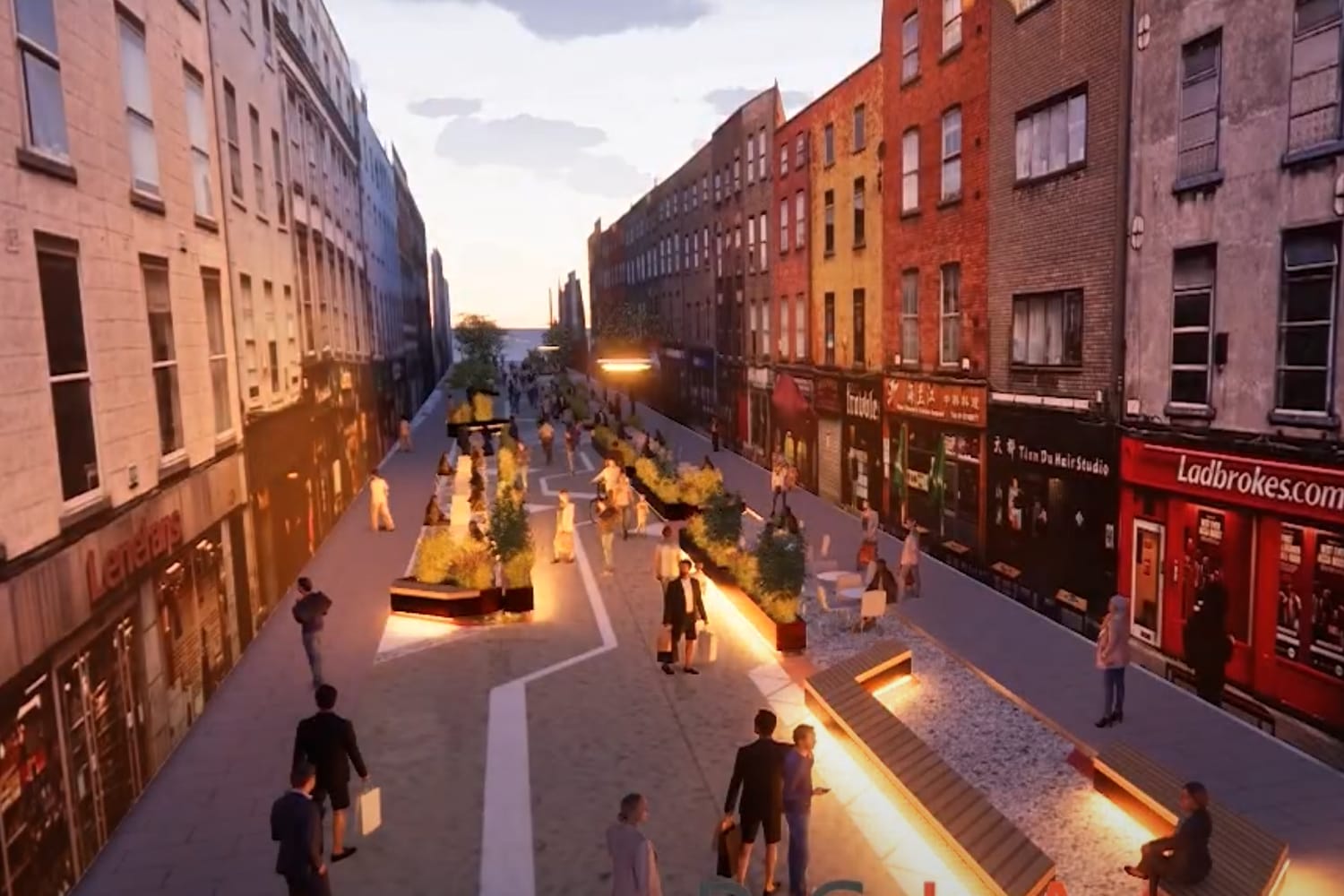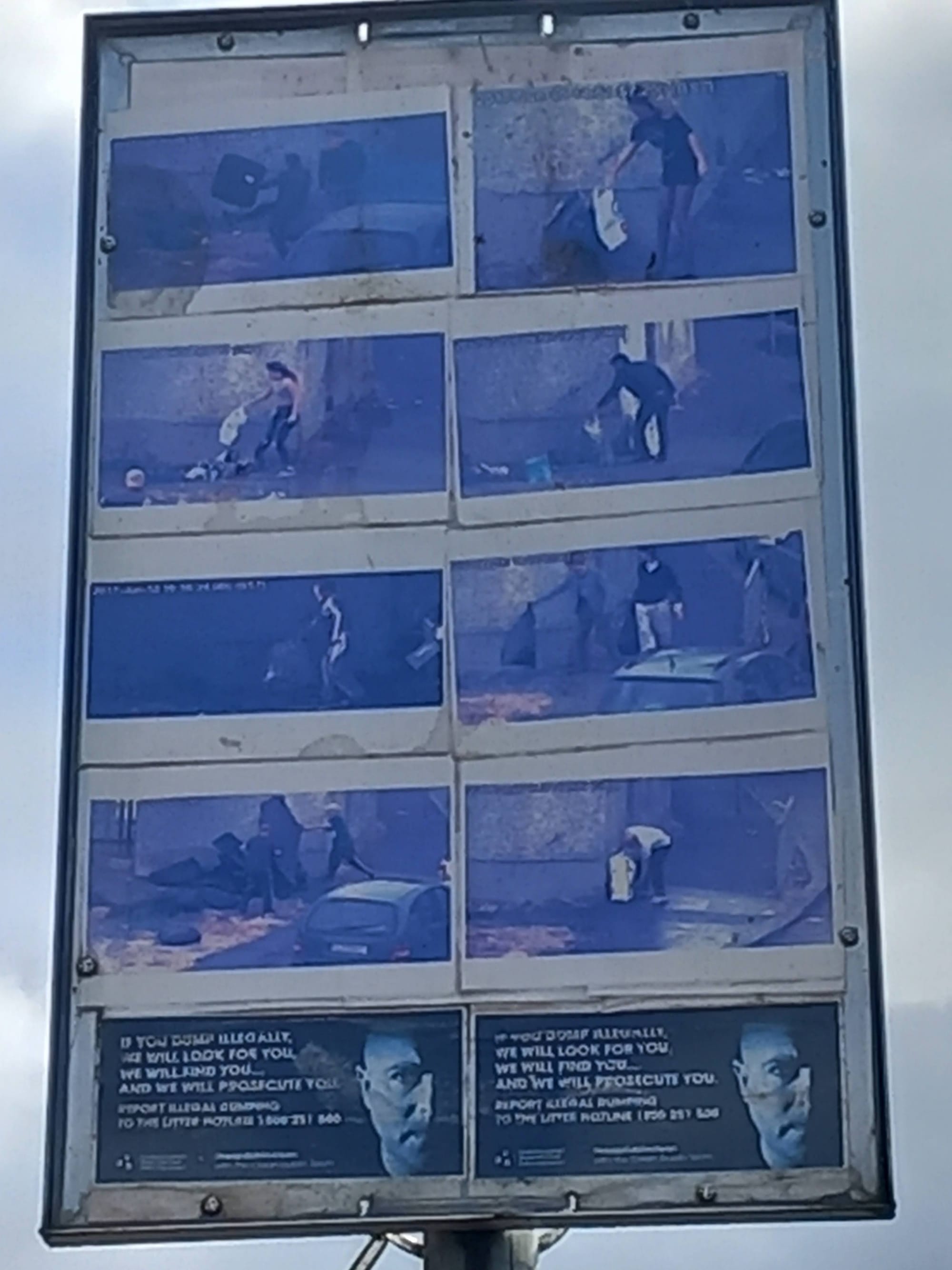What’s the best way to tell area residents about plans for a new asylum shelter nearby?
The government should tell communities directly about plans for new asylum shelters, some activists and politicians say.
These are some of the things discussed in a meeting of the Central Area Committee recently.

Dublin City Council banned cars on Capel Street three years ago. Since then, it has resurfaced the road, planted trees and installed seating and planters.
The council collaborated with local businesses and Fáilte Ireland to introduce uniform street furniture that is free of alcohol companies’ branding, according to a report to councillors on the Central Area Committee on 11 February.
Claire French, a senior engineer with the council, said the council is set to finish the works on Capel Street by Easter.
Green Party Councillor Janet Horner, who chairs the Central Area Committee, asked whether the council plans to finish the street to match the designs of architect Bernard Seymour.
In March 2023, Seymour outlined an ambitious vision for Capel Street. He said he had done extensive local consultation with residents and businesses.
His plans included removing kerbs and installing a lot of lighting, as well as planting and seating.
Horner, the Green Party councillor, said she wants a detailed report providing a breakdown of which elements of Seymour’s plan the council is implementing and which it isn’t.
“We had aspirational drawings presented to us … as to what the street was to look like,” she said. But not all of those ideas have been turned into reality, she said.
On the phone after the meeting, Horner said that several important aspects of Seymour’s vision have not been rolled out, for example, the innovative lighting he included overhead and under seating has not yet been installed.

Horner said she is a big fan of the works so far. “It is great to see a public realm work that does have a huge commitment from the city council,” said Horner at the meeting.
But she wants a report on why the council didn’t include all the features in the architect’s vision, she said.
Social Democrats Councillor Cat O’Driscoll said she thought the works so far had been “a great success”. “The air tastes better on Capel Street than other streets,” she said.
Fine Gael Councillor Ray McAdam said the reduction in alcohol branding on Capel Street is welcome. But, he said, the council needs a traffic-management plan for the wider area.
Independent Councillor Christy Burke and Sinn Féin Councillor Janice Boylan said some people living on nearby Beresford Street, Church Street and North King Street think traffic and parking there are worse since Capel Street went car-free.
The works started nearly three years ago, said French, at the meeting, and since then, there have been fewer cars on the surrounding residential streets, too, she says. “Which is a big win for that area.”
Dublin City Council plans to roll out CCTV cameras at Belvedere Place, Sherrard Street Lower and Summer Street North to tackle illegal dumping.
But it may still struggle to prosecute people.
The council staff met with the CCTV oversight board in December to present its business case for installing cameras at the three locations in the north inner-city, according to a report to councillors for the Central Area on Tuesday, 11 February.
Independent Councillor Cieran Perry said he was worried that the new cameras won’t deter illegal dumpers since they can only identify licence plates and not people’s faces.
“It’s been raised before about how disappointed we are that apparently the Data Protection Commissioner believes that the rights of illegal dumpers and anti-community people are more important than the rights of communities,” said Perry.
Back in 2016, Dublin City Council ran a “name and shame” campaign against illegal dumpers, posting photos of the people dumping illegally on the city streets.

Councillors reported that the approach was highly effective. But capturing the person’s image on CCTV and creating a poster without their permission was found not to be compliant with the General Data Protection Regulation (GDPR).
In 2022, the government introduced new legislation to allow councils to use CCTV to tackle illegal dumping.
Councillors had hoped that the new legislation would be effective, said Perry at the meeting, but that looks unlikely because the illegal dumpers can just park around the corner and still dump their rubbish.
“We’re tied with the legislation,” said Barry Woods, head of waste management for Dublin City Council.
“There are standard operating procedures that we have to comply with,” Woods said. “It is going to be a challenge to get prosecutions.”
The council is just waiting on confirmation that installing the cameras won’t affect the lights on the lamposts, said Woods, and then they will install the cameras.
A spokesperson for the Data Protection Commission didn’t address questions directly, as to whether the new legislation will be effective.
“The governance mechanisms outlined in law by the Garda Síochána Act, 2005 and the Circular Economy and Miscellaneous Provisions Act, 2022 provide Local Authorities with clear frameworks to implement CCTV schemes,” he said.
He referred queries to the council and sent a link to the FAQ section of the Data Protection Commission’s website.
Councillors noted a proposal to add the Drumcondra public library to the council’s record of protected structures. It’s a single-storey art deco library built in 1937.
The Drumcondra library is part of a trio of art deco libraries in the city built around the same time.
One of its sisters, the old Inchicore library building, on Emmet Road, is already on the record of protected structures. Another, in Ringsend, isn’t.
Fine Gael Councillor Gayle Ralph asked if adding the Drumcondra library to the record of protected structures would interfere with a feasibility study she has requested to add a community facility to the library as an extension.
“There are no community resources in the area for people to use,” Ralph said at the meeting.
Senior planner Malachy Bradley said the proposal to add the building to the record of protected structures would go to public consultation first, and after that to the full council for a decision.
“A designation as a protected structure doesn’t necessarily preclude or sterilise the development of a building or a site,” Bradley said.
The council can get grants from the central government to improve buildings that are protected structures, he says.
Ralph said by phone on Friday that there is no community centre in Drumcondra, so community groups often meet in the local hotel, and the young people have no youth club, she says. “My overall mission for the area is to get a community centre,” she says.
She has also asked council officials for feasibility reports on the possibility of extending the Rosmini Gaels GAA clubhouse for community use.
Get our latest headlines in one of them, and recommendations for things to do in Dublin in the other.